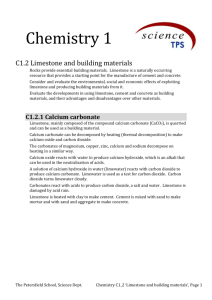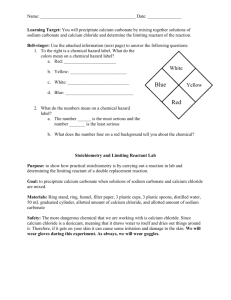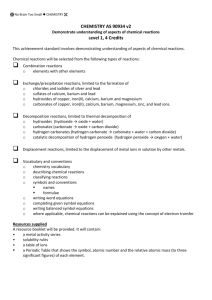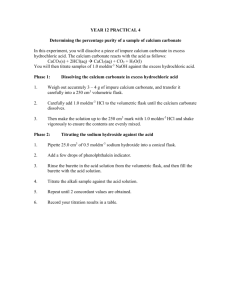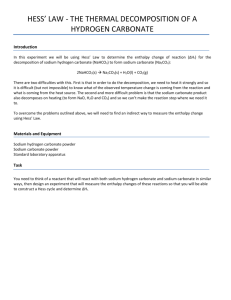File - Mr. Jensen`s Science
advertisement
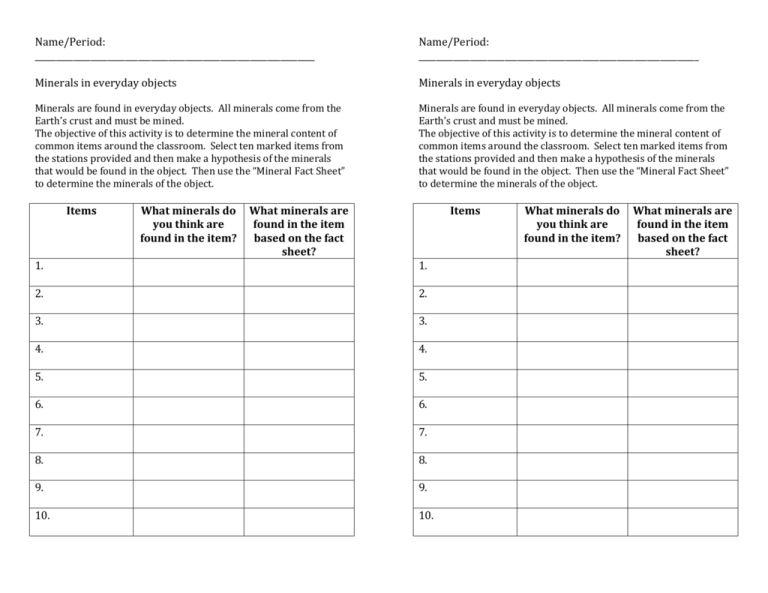
Name/Period: _________________________________________________________________ Name/Period: _________________________________________________________________ Minerals in everyday objects Minerals in everyday objects Minerals are found in everyday objects. All minerals come from the Earth’s crust and must be mined. The objective of this activity is to determine the mineral content of common items around the classroom. Select ten marked items from the stations provided and then make a hypothesis of the minerals that would be found in the object. Then use the “Mineral Fact Sheet” to determine the minerals of the object. Minerals are found in everyday objects. All minerals come from the Earth’s crust and must be mined. The objective of this activity is to determine the mineral content of common items around the classroom. Select ten marked items from the stations provided and then make a hypothesis of the minerals that would be found in the object. Then use the “Mineral Fact Sheet” to determine the minerals of the object. Items What minerals do you think are found in the item? What minerals are found in the item based on the fact sheet? Items 1. 1. 2. 2. 3. 3. 4. 4. 5. 5. 6. 6. 7. 7. 8. 8. 9. 9. 10. 10. What minerals do you think are found in the item? What minerals are found in the item based on the fact sheet? Mineral Fact Sheet Mineral Fact Sheet Wallboard – gypsum, clay, perlite, vermiculite, aluminum hydrate, borates Paint – titanium dioxide, kaolin, calcium carbonate, mica, silica, wollastonite Glass – silica, quartz, lead, titanium, sodium carbonate Door Knob – nickel Cement - limestone Insulation - vermiculite Matches – sulfur Sun block – zinc Utensils – nickel, iron, silver Speakers – aluminum, cobalt, silver, silica, iron, titanium, graphite, mica, carbon, strontium, neodymium Plastic – calcium carbonate, talc, wollastonite, barium sulfate, clay, mica Keys – nickel Stainless steel – iron, nickel, molybdenum, chrome Ceramic tiles – clay, feldspar, fluorite, lithium, silica, talc Countertop – titanium dioxide, calcium carbonate, aluminum hydrate Knife – chromium Table salt – halite, iodine Sugar – limestone, lime Toothpaste – calcium carbonate, limestone, sodium carbonate, fluorite, mica, zinc Carpet – calcium carbonate, limestone Textiles – antimony, feldspar, tungsten Dish soap – halite, sodium carbonate Can opener – iron, nickel, chromium, molybdenum Incandescent light bulbs – tungsten Window panes – silica, lime, sodium carbonate, calcium carbonate, halite, feldspar Brick – kaolin, shale, barium, manganese Soda cans – aluminum Cell phone battery- gold, tungsten, tin, and tantalum (refined coltan) Wallboard – gypsum, clay, perlite, vermiculite, aluminum hydrate, borates Paint – titanium dioxide, kaolin, calcium carbonate, mica, silica, wollastonite Glass – silica, quartz, lead, titanium, sodium carbonate Door Knob – nickel Cement - limestone Insulation - vermiculite Matches – sulfur Sun block – zinc Utensils – nickel, iron, silver Speakers – aluminum, cobalt, silver, silica, iron, titanium, graphite, mica, carbon, strontium, neodymium Plastic – calcium carbonate, talc, wollastonite, barium sulfate, clay, mica Keys – nickel Stainless steel – iron, nickel, molybdenum, chrome Ceramic tiles – clay, feldspar, fluorite, lithium, silica, talc Countertop – titanium dioxide, calcium carbonate, aluminum hydrate Knife – chromium Table salt – halite, iodine Sugar – limestone, lime Toothpaste – calcium carbonate, limestone, sodium carbonate, fluorite, mica, zinc Carpet – calcium carbonate, limestone Textiles – antimony, feldspar, tungsten Dish soap – halite, sodium carbonate Can opener – iron, nickel, chromium, molybdenum Incandescent light bulbs – tungsten Window panes – silica, lime, sodium carbonate, calcium carbonate, halite, feldspar Brick – kaolin, shale, barium, manganese Soda cans – aluminum Cell phone battery- gold, tungsten, tin, and tantalum (refined coltan)



